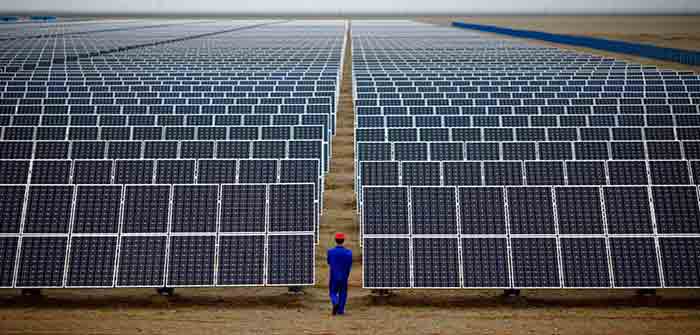
by Steve Miller at RealClear Investigations
The pathway to a green future involves taking millions of acres of pristine wilderness and turning them into fields of windmills and hot expanses of glistening panels.
The Biden administration’s goal of supplying 40% of the nation’s energy from the sun by 2035 means covering millions of acres of forest and desert habitat with vast solar panel installations fenced off like prisons. It would require 8,800 square miles of land, or 5.6 million acres, to generate that power (leaving out small installations on buildings and the like) — about the size of Rhode Island and Massachusetts combined.
But the push to convert that land from pastoral to energy-productive is galvanizing a new environmental movement, one led by citizen groups and small non-profits rather than the monied green interests arrayed against them — ones ironically accustomed to casting the fossil fuel industry in the role of the ecological heavy.
The potential impacts of solar-power installations have flown under the radar while much public resistance has centered on wind farms – which kill an estimated 1.2 million birds per year in the U.S. and are considered loud and unsightly by many who live near their towering turbines. Even as the Biden administration has made limiting the environmental impact of oil and gas a key goal, it has opened large tracts of federal lands to solar development by major corporations including Duke Energy, Exelon and BrightSource Energy.
Solar advocates say mitigating climate change requires a switch to carbon-free energy, and utility-scale solar installations are vital to the effort. They contend a looming climate crisis requires the switch to be made quickly, although the effects of widespread solar development are not fully understood.
Numerous critics say hold on. They do not oppose a buildout of solar, but argue for more environmentally sensitive placement on brownfields, abandoned military bases, rooftops and other areas, an approach that would cost more than plunking down massive solar installations on pristine lands but do less damage. They contend that mega-solar installations are disrupting fragile ecosystems, including imperiling species of indigenous animals and flora, while ruining tourist destinations and clogging roads. Some also voice concern about the unknown long-term effects of solar power plants, such as how they age, the waste they create and concerns that heat produced by the panels could itself contribute to global warming.
But green corporate interests favor the largest and cheapest way to produce solar energy — and a number of interested parties, including resident groups, say they are getting a pass. Several of the nation’s largest wilderness advocacy groups have board members with ties to corporate solar developers, referred to by watchdogs as Big Solar…
Continue Reading